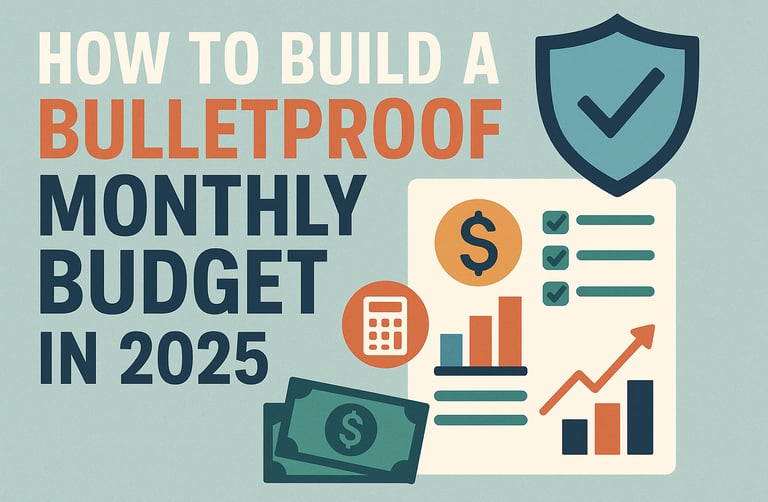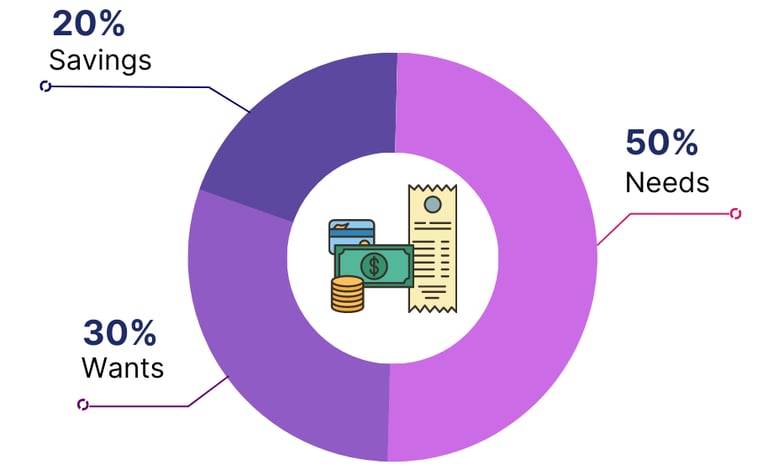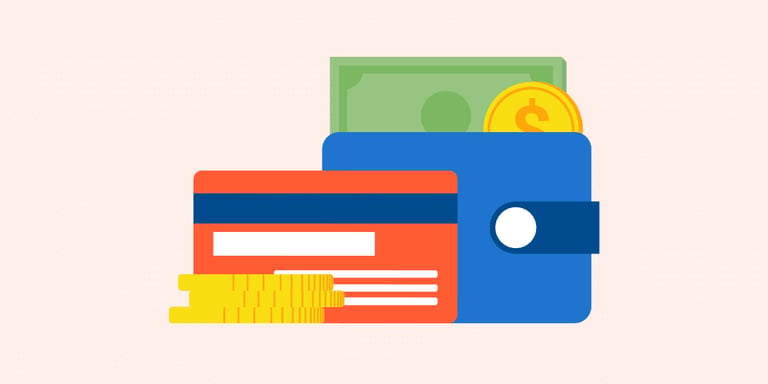How to Build a Bulletproof Monthly Budget in 2025: A Complete Beginner's Guide (Even If You Hate Math)
This beginner-friendly guide breaks down how to create a bulletproof monthly budget in 2025 even if you're not good at math. Learn step-by-step budgeting strategies, smart tools, and automation tips to take control of your finances and build long-term financial freedom. Perfect for anyone living paycheck to paycheck or just starting their personal finance journey.
7/16/20253 min read


Creating a monthly budget can feel intimidating especially if math isn't your strong suit. However, budgeting doesn't require complex calculations, just straightforward planning. This comprehensive guide simplifies the process, making it easy to manage and genuinely effective for everyone.
For more personalized budgeting advice, visit our Financial Planning Services at Tarish Financial.
Why You Need a Monthly Budget: Eye-Opening Statistics
65% of Americans don't know how much they spent last month (Mint, 2023).
Households that budget successfully save twice as much money as those without budgets (National Foundation for Credit Counseling, 2022).
78% of Americans live paycheck to paycheck, reduced to 55% for those who budget (CareerBuilder, 2023).
Individuals who write down financial goals are 42% more likely to achieve them (Harvard Business Study, 2022).
Step 1: Master the 50/30/20 Rule
Popularized by Senator Elizabeth Warren, this rule simplifies budgeting:
50% for needs (housing, groceries, utilities, minimum debt payments)
30% for wants (dining, entertainment, hobbies)
20% for savings and debt repayment
Example: Monthly income $4,000:
Needs: $2,000
Wants: $1,200
Savings/Debt repayment: $800
Step 2: Track Your Expenses Without Math Stress
Leverage budgeting apps to simplify tracking:
Mint: Free automatic categorization and visualization.
YNAB: $14.99/month proactive approach.
PocketGuard: Free disposable income management.
According to NerdWallet (2022), regular use of budgeting apps can boost savings by 20%.
Step 3: Set SMART Financial Goals
Use the SMART framework:
Specific
Measurable
Achievable
Relevant
Time-bound
Clear goals help maintain budgeting discipline, improving budget adherence by 42% (Ramsey Solutions, 2022).
Step 4: Automate Your Budget
Automation simplifies finances:
Automatic paycheck division
Scheduled savings transfers
Automated bill payments
Regular investment contributions
Vanguard (2022) shows automation increases savings rates by 35%.
Step 5: Regular Budget Reviews
Weekly (10 min): Quick spending check-in
Monthly (30 min): Detailed budget analysis
Quarterly (1 hr): Goal assessment and adjustment
Annual (2-3 hrs): Comprehensive financial review
Need help with your financial goals? Connect with Tarish Financial.
Common Budgeting Mistakes (And How to Avoid Them)
Underestimating expenses: Round up by 10-15%
Ignoring irregular expenses: Create monthly allocations for annual costs
Complexity: Simplify categories and include flexibility for enjoyment
Advanced Budgeting Strategies
Anti-Budget: Automate savings first, spend remainder freely
Percentage-Based Budgeting: Flexible spending ratios
80/20 Budget: Simple approach emphasizing savings
Seasonal Budgeting: Adjust budgets based on seasonal expenses
Budget Templates and Tools
Free Templates: Google Sheets, Excel, Printable PDFs
Physical Tools: Budget binders, envelope systems, bullet journals
Taking Action: Your 30-Day Budget Challenge
Week 1: Calculate income, select budgeting method, and tracking tool
Week 2: Track and analyze spending
Week 3: Optimize and automate
Week 4: Final adjustments and monthly review planning
Conclusion: Your Path to Financial Freedom Starts Now
Budgeting isn't about perfection; it's about consistent habits and clear goals. Start small, stay consistent, and watch your financial confidence grow.
Explore more about financial planning and budgeting by visiting our blog.
Quick Action Steps
Calculate last month's income
Choose a budgeting tool
Set one financial goal
Automate one savings transfer
Remember: The best budget is one you'll actually use. Start simple, stay consistent, and watch your financial health improve.
References
Mint. (2023). "Spending Awareness Among Americans."
National Foundation for Credit Counseling. (2022). "Financial Literacy Survey."
NerdWallet. (2022). "Budgeting App Impact Study."
Ramsey Solutions. (2022). "Budgeting Success Factors."
Vanguard. (2022). "Impact of Automatic Savings Contributions."
CareerBuilder. (2023). "Living Paycheck to Paycheck Survey."
Harvard Business Review. (2022). "The Power of Written Goals."






